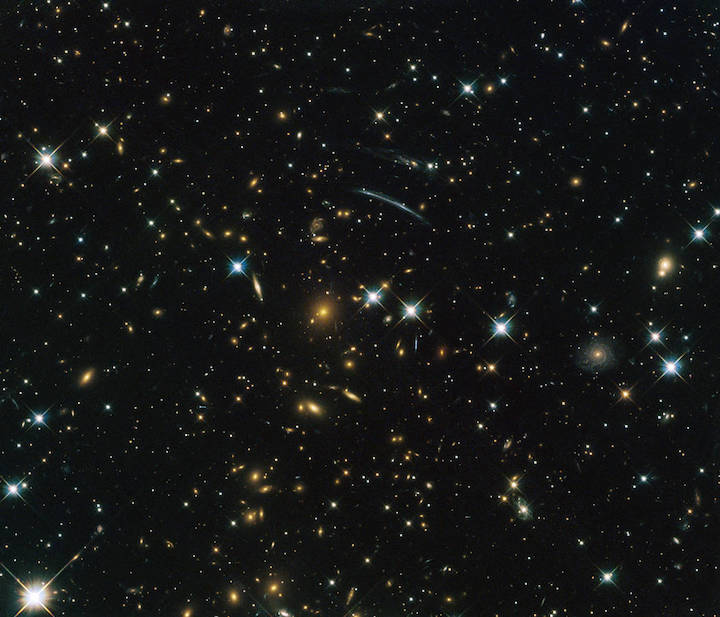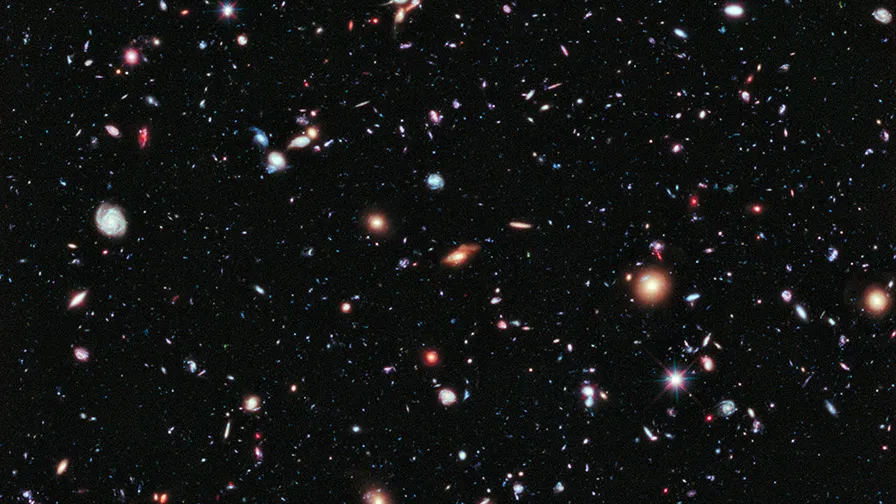When we gaze up at the night sky, the light from distant stars and galaxies tells a story that stretches across space and time. The shimmer of a star seen tonight may have begun its journey long before humans even existed. To understand this cosmic narrative, astronomers rely on one of the most profound and fascinating measurements in science: the light year. The term “light year” may sound like a measure of time, but in reality, it is a measure of distance—a way to describe the vastness of the universe in terms that reflect the speed of light itself. To truly grasp what a light year means, one must first understand how light travels, how distances are measured in astronomy, and why this unit is essential to our understanding of the cosmos.
The Nature of Light and Its Speed
Light is not merely illumination; it is a fundamental messenger of the universe. It travels as electromagnetic radiation, carrying both energy and information. In the vacuum of space, light moves at an astonishing speed of approximately 299,792 kilometers per second, which is equivalent to about 186,282 miles per second. This constant, denoted by the symbol c, is one of the foundational quantities in physics.
At that speed, light can circle the Earth about 7.5 times in just one second. But when astronomers study the universe, even such immense speed reveals the staggering scale of space. The distances between stars and galaxies are so vast that measuring them in kilometers or miles becomes impractical. The numbers would be so large as to lose meaning. Instead, scientists use the distance that light travels in one year as a unit of measurement—a light year.
Defining the Light Year
A light year is the distance that light travels in one year in a vacuum. Since light moves at nearly 300,000 kilometers per second, the distance it covers in one year is enormous. By multiplying the speed of light by the number of seconds in a year—31,536,000 seconds—we find that one light year equals roughly 9.46 trillion kilometers, or about 5.88 trillion miles.
This means that when astronomers say a star is 10 light years away, the light we see from that star today left it 10 years ago and has been traveling through space ever since. The further away an object is, the older the light we observe. When we look deeper into space, we are also looking further back in time. The light from galaxies billions of light years away shows us the universe as it was billions of years ago, making the light year not only a measure of distance but also a measure of cosmic history.
The Challenge of Measuring Cosmic Distances
Understanding a light year helps us appreciate just how immense the universe is, but measuring those distances is no simple task. Unlike terrestrial surveying, astronomers cannot stretch a tape measure across space. Instead, they rely on indirect methods rooted in geometry, physics, and observation.
The most basic technique is parallax, a geometric method that measures the apparent shift in position of a nearby star against the background of more distant stars as Earth orbits the Sun. This shift, though incredibly small, allows scientists to calculate the star’s distance using simple trigonometry. The baseline for this cosmic measurement is the diameter of Earth’s orbit—about 300 million kilometers. Parallax is effective for relatively close stars, up to a few thousand light years away.
Beyond that range, astronomers turn to other methods. They use “standard candles,” such as Cepheid variable stars and Type Ia supernovae, whose intrinsic brightness is well known. By comparing their true luminosity to their observed brightness, scientists can determine how far away they are. This approach extends distance measurement across millions or even billions of light years.
Why the Light Year Is a Measure of Distance, Not Time
The term “light year” often confuses people because it includes the word “year,” which we commonly associate with time. However, it refers to the distance that light travels in one year, not the time itself. The confusion arises because time and distance are intertwined in the physics of relativity, yet distinct in practical usage.
Think of it this way: when we say a star is 100 light years away, it means the light from that star took 100 years to reach us. The light year tells us both the distance and how long the light has been traveling, but it is fundamentally a spatial measurement. Just as a kilometer measures the distance a car might travel, a light year measures how far light travels in the cosmic arena.
Understanding this distinction is crucial because it helps bridge the gap between the scale of human experience and the scale of the universe. A light year gives us a conceptual handle on distances that would otherwise be incomprehensible.
The Immensity of the Universe in Light Years
To appreciate the true vastness of the cosmos, consider a few examples expressed in light years. The Moon is only about 1.28 light seconds from Earth, meaning light from the Moon takes just over one second to reach us. The Sun, our nearest star, is approximately 8.3 light minutes away, so sunlight takes over eight minutes to travel to Earth.
The nearest star system beyond our own, Alpha Centauri, lies about 4.37 light years away. This means that the light we see from Alpha Centauri today left its stars more than four years ago. Even if humanity were able to travel at the speed of light—a physical impossibility with current technology—it would still take over four years to reach that system.
Expanding outward, the Milky Way Galaxy, which contains roughly 100 billion stars, spans about 100,000 light years across. The light from stars at the opposite side of our galaxy has been traveling for 100,000 years before reaching us. Beyond the Milky Way lies the Andromeda Galaxy, our nearest major galactic neighbor, located about 2.5 million light years away. The light we now observe from Andromeda began its journey when early humans first appeared on Earth.
The observable universe, bounded by the distance light has been able to travel since the Big Bang, stretches about 93 billion light years across. Light from the most distant galaxies and quasars we can detect began its journey more than 13 billion years ago, giving astronomers a window into the earliest moments of cosmic history.
Light Years and the Lookback Time
Because light takes time to travel, when we observe distant objects, we are effectively looking into the past. This concept, known as lookback time, is central to cosmology. When we observe a star one thousand light years away, we see it as it was one thousand years ago. For galaxies billions of light years away, we are witnessing their ancient state, often when the universe itself was young.
This relationship between distance and time allows astronomers to study cosmic evolution directly. By observing galaxies at various distances, they can reconstruct how galaxies form, merge, and mature over billions of years. The farther out we look, the further back in time we go, approaching the cosmic dawn when the first stars ignited.
In this sense, the light year serves not only as a unit of measurement but also as a time capsule. Every photon that reaches our telescopes carries information about the universe’s past. The sky, therefore, is not merely a snapshot of space—it is a record of time itself.
Measuring Light Years through Parallax and Beyond
The measurement of stellar distances has evolved dramatically over the past century. Early astronomers relied on parallax, observing stars at different times of year and measuring their apparent motion. Although the angles involved are minuscule—often less than a thousandth of a degree—modern instruments like the European Space Agency’s Gaia satellite can measure parallax with extraordinary precision, mapping billions of stars and determining their distances with unprecedented accuracy.
For objects beyond the reach of parallax, astronomers use other ingenious methods. The brightness of Cepheid variable stars, for instance, varies in a predictable pattern that correlates with their true luminosity. By observing the period of their brightness fluctuations, astronomers can calculate their intrinsic brightness and compare it with how bright they appear, revealing their distance in light years.
Similarly, Type Ia supernovae serve as “standard candles” for measuring even greater distances. These exploding stars have nearly uniform peak brightness, allowing astronomers to use them as cosmic mileposts. By calibrating such methods against nearby objects measured through parallax, scientists have built a “cosmic distance ladder” that extends our reach across the observable universe.
The Light Year in Comparison to Other Cosmic Units
While the light year is a convenient unit for expressing stellar and galactic distances, astronomers also use other measurements depending on scale. The astronomical unit (AU) is based on the average distance between Earth and the Sun, roughly 150 million kilometers. It’s useful for describing distances within our solar system. For larger distances, scientists use the parsec, equivalent to about 3.26 light years.
The parsec is derived from parallax measurements, representing the distance at which one astronomical unit subtends an angle of one arcsecond. Although professional astronomers often prefer parsecs for precision, the light year remains more intuitive for the public because it directly relates distance to the speed of light—a concept that captures both imagination and comprehension.
The Role of Redshift in Measuring Distant Light
For galaxies billions of light years away, direct measurement of distance becomes impossible using parallax or standard candles. Instead, astronomers rely on redshift, the stretching of light waves caused by the expansion of the universe. As light travels through expanding space, its wavelength lengthens, shifting toward the red end of the spectrum. The greater the redshift, the farther the object is and the older the light.
By analyzing a galaxy’s spectrum, scientists can calculate its redshift and estimate its distance in light years. This technique allows astronomers to probe the most distant reaches of the cosmos, revealing structures formed shortly after the Big Bang. The relationship between redshift, distance, and time helps define the very structure and history of the universe.
The Speed of Light as a Cosmic Limit
One of the most profound implications of the light year is that it reflects the ultimate speed limit of the universe. According to Einstein’s theory of relativity, nothing can travel faster than light in a vacuum. This cosmic speed limit sets a boundary on how information, energy, and matter can move through space-time.
Because of this, the vast distances measured in light years are not merely spatial—they also define the horizon of what we can observe and interact with. The finite speed of light means there are parts of the universe whose light has not yet reached us. These regions lie beyond our observable universe, forever hidden from view unless cosmic expansion or physics itself changes in ways we cannot yet predict.
The speed of light also unites space and time into a single continuum: space-time. The distance light travels defines not only the scale of the universe but also the flow of time within it. Every time we measure a light year, we are measuring both the space light has crossed and the time it took to do so.
Light Years and the Age of the Universe
The concept of the light year also plays a crucial role in determining the age of the universe. The oldest light we can observe comes from the cosmic microwave background (CMB), radiation left over from the Big Bang. This faint glow, discovered in 1965, has traveled for more than 13.8 billion years. By analyzing its properties, scientists have determined the universe’s age to be about 13.8 billion years.
This means that when astronomers look at galaxies 13 billion light years away, they are observing them as they were when the universe was only a few hundred million years old. In effect, every light year between us and those galaxies represents a slice of cosmic history. The further we peer into space, the closer we approach the beginning of everything we know.
The Human Perspective on Light Years
To the human mind, distances measured in light years are almost incomprehensible. Our daily experience is confined to kilometers and miles, where even a journey around the Earth’s equator—about 40,000 kilometers—is manageable to imagine. Yet in astronomical terms, this is less than a blink of light’s journey in a fraction of a second.
If we attempted to travel one light year at the speed of our fastest spacecraft—NASA’s Parker Solar Probe, moving at about 700,000 kilometers per hour—it would take over 17,000 years to reach that distance. To cross the 4.37 light years to Alpha Centauri, we would need roughly 75,000 years at that speed. These figures reveal the enormous challenge of interstellar travel and why, for now, the light year remains a theoretical boundary rather than a practical one.
Nevertheless, measuring distances in light years helps humanity contextualize its place in the universe. It reminds us of both our smallness and our potential. Though we are confined to one planet orbiting one star, our minds can grasp and explore distances that span trillions of kilometers. The light year embodies this intersection between human curiosity and cosmic immensity.
Light Years in Popular Culture and Misconceptions
Because the term “light year” appears frequently in science fiction and popular media, it is often misunderstood. Films and novels sometimes use it incorrectly as a measure of time rather than distance. A character might say something like “it will take light years to reach the destination,” implying duration instead of distance. While such usage is technically incorrect, it reflects how deeply embedded the concept has become in the human imagination.
Science fiction often uses light years to evoke scale, emphasizing how vast interstellar travel truly is. In stories like Star Trek or Star Wars, ships that can travel faster than light—using warp drives or hyperspace—allow characters to cross light years in moments. These fictional technologies, while scientifically implausible, explore humanity’s enduring desire to overcome the cosmic barriers that light years represent.
Understanding the scientific meaning behind the term allows us to separate imaginative fiction from physical reality. It also highlights how science and art inspire each other: the wonder evoked by the concept of the light year drives both scientific discovery and creative expression.
Light Years and the Expansion of Human Knowledge
Every advance in astronomy expands our understanding of light years and what they reveal. Telescopes like Hubble, James Webb, and future space observatories extend our vision deeper into space, capturing light that has traveled for billions of years. These instruments effectively act as time machines, showing us galaxies as they existed shortly after the birth of the universe.
Each new observation refines our cosmic distance measurements, helping to resolve fundamental questions: How fast is the universe expanding? How did the first galaxies form? What lies beyond the edge of what we can see? The concept of the light year underpins all these questions, forming the foundation of observational cosmology.
In addition, light years help scientists compare scales within the universe. They allow us to express the size of galaxies, the separation of clusters, and the dimensions of cosmic filaments—massive structures of galaxies connected by invisible threads of dark matter. By speaking the language of light years, scientists translate the incomprehensible into something measurable and meaningful.
The Philosophical Significance of the Light Year
Beyond its scientific precision, the light year holds deep philosophical implications. It connects us to the universe in a profound temporal and spatial relationship. Every time we look at the stars, we engage in a form of time travel, witnessing events from the distant past. The light from a star a thousand light years away began its journey long before our ancestors learned to write, and yet it reaches our eyes tonight, completing a journey of unimaginable persistence.
This realization reshapes our understanding of time and existence. The cosmos operates on scales that dwarf human lifetimes, civilizations, and even the lifespan of species. The light year reminds us that we inhabit a universe both ancient and vast, where every photon carries the memory of creation.
It also emphasizes the unity of space and time. The distance between galaxies is not merely emptiness but the medium through which light, energy, and information travel. In that sense, the light year becomes a symbol of connection—a bridge linking past and present, distant and near, observer and observed.
The Future of Measuring the Cosmos
As technology advances, our methods of measuring light years and cosmic distances will become even more refined. Missions like Gaia, which maps the positions and motions of over a billion stars, are creating the most detailed three-dimensional maps of our galaxy ever constructed. Future space telescopes equipped with interferometric techniques may measure distances across millions of light years with unprecedented precision.
Gravitational wave astronomy adds another dimension to this quest. By observing ripples in space-time produced by merging black holes and neutron stars, scientists can infer distances independent of light-based measurements. These “standard sirens,” as they are called, complement traditional methods and could soon redefine our cosmic distance scale.
Meanwhile, advances in computational astrophysics allow us to model the universe in extraordinary detail. Simulations based on known physical laws let scientists test how galaxies evolve across billions of light years and compare those results with observational data. The combination of data and theory continues to refine our understanding of the cosmic distances that shape reality.
Conclusion
A light year is far more than a measure of distance—it is a testament to the profound relationship between light, space, and time. It captures the essence of how we perceive the universe, transforming incomprehensible scales into measurable realities. By understanding how long a light year truly is—about 9.46 trillion kilometers—we begin to grasp both the enormity of the cosmos and the limits of our perception.
Every point of light in the night sky tells a story written across light years of travel. To see a star is to glimpse the past; to measure its distance is to touch the structure of the universe itself. Through the language of light years, humanity has learned not only to chart the heavens but also to understand its place within them.
In contemplating light years, we confront both the grandeur and the humility of existence. The distances are vast beyond imagination, yet the very act of measuring them proves that the human mind is capable of reaching across the cosmos. A light year, then, is not only a scientific unit—it is a symbol of discovery, endurance, and our unending curiosity about the universe we call home.






